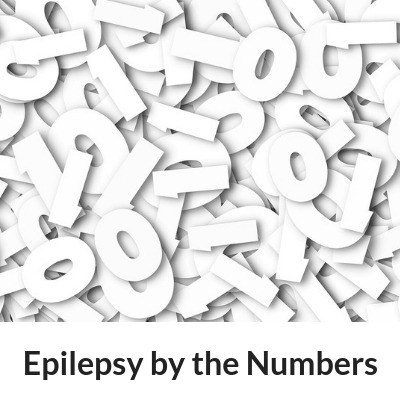 We’ve updated our carefully researched look at epilepsy by the numbers. This page breaks epilepsy down in a way that we hope might make epilepsy a little more personal to you.
We’ve updated our carefully researched look at epilepsy by the numbers. This page breaks epilepsy down in a way that we hope might make epilepsy a little more personal to you.
You just might be surprised to learn how many people are living with and dying as a result of epilepsy. Updated as of November 25, 2018
1% of the world’s population
Epilepsy affects more than 1% of the world’s population. As of 2018, that is reflective of more than 70 million people worldwide. 1
3.4 Million Americans
Epilepsy and seizures affects more than 3.4 million Americans of all ages. 2
3rd Most Common
Epilepsy is the third most common neurological disorder in the US after Alzheimer’s and stroke. 3
40 Different types of Seizures
There are over 40 different types of seizures. Not all of them involve convulsions. Tricky little buggers. 4
70% have No Known Cause
There is no known cause in 70 percent of the cases diagnosed. Yep you read that right, 70 percent. 5
3X Higher Mortality Rate
The mortality rate is 2 to 3 times higher among people with epilepsy. 6 Oh yeah, and the risk of sudden death is (brace yourself) 24 times greater. 7
$15.5 Billion in Costs
SUDEP Underestimated
Our voice matters
These statistics are available via the CDC, UNAID, WHO, IOM, and NINDS.
Living with Epilepsy
Below you will find a few recent stories of people living with epilepsy, and we hope you will share your own story.
References:
1: https://www.cdc.gov/media/pdf/releases/aag-epilepsy-2017_508c.pdf
2: https://www.cdc.gov/epilepsy/about/fast-facts.htm
3: http://www.humanepilepsyproject.org/what-is-epilepsy/
4: https://www.ilae.org/guidelines/definition-and-classification/operational-classification-2017
5: https://www.aesnet.org/for_patients/facts_figures
6: https://www.ncbi.nlm.nih.gov/pubmed/15075062
7: https://www.epilepsy.com/sites/core/files/atoms/files/SUDEP_HealthCareProviders.pdf
8: https://www.cdc.gov/chronicdisease/resources/publications/aag/pdf/2016/aag-epilepsy.pdf
9: https://www.ucsf.edu/news/2016/09/404176/sudden-neurological-death-misclassified-underestimated
